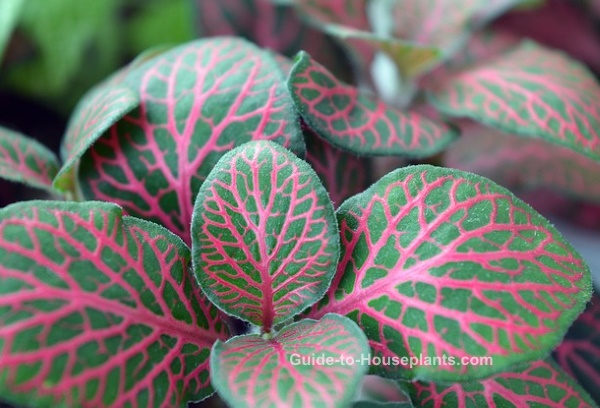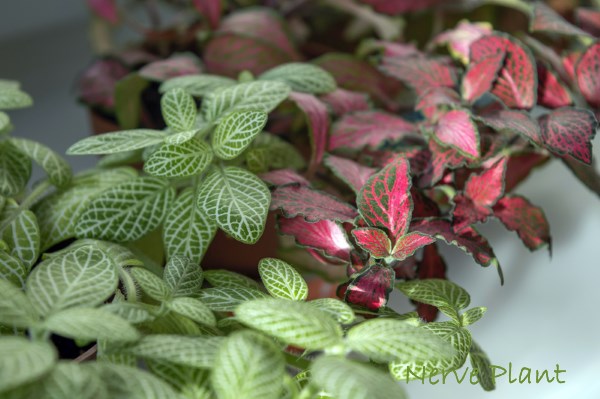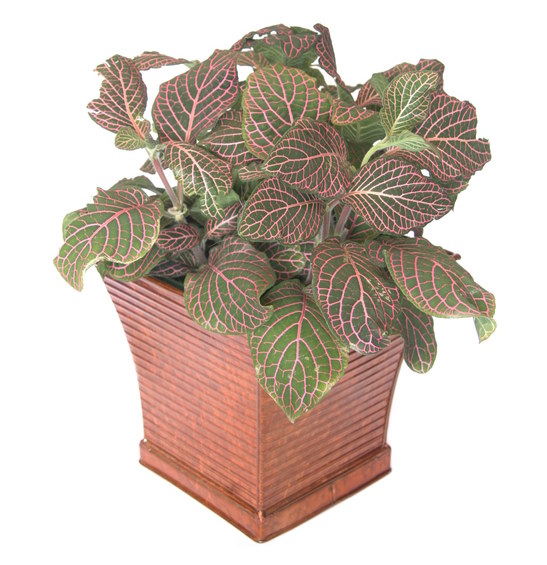
Botanical Title: Fittonia verschaffeltii
Nerve Plant has stunning, deep-green leaves with vein patterns of white, pink, or crimson, making it a standout amongst home vegetation. Learn the way to water, when to fertilize and the way a lot daylight this eye-catching houseplant needs.
In its native South America, this tropical plant grows as a floor cowl and might unfold out about 12 inches (30 cm). Its low-spreading behavior makes it ultimate for dish gardens and terrariums, the place it thrives with the assistance of excessive humidity.
This plant grows finest with even temperatures round 70°F/21°C. It does not like dry air, drafts, or direct solar, any of which can trigger its leaves to shrivel or fall off.
Is nerve plant toxic? No, this stunning houseplant is secure round cats and canine.
This standard houseplant is simple to search out in backyard facilities. You could discover Fittonia verschaffeltii on the market by different frequent names, resembling Silver Internet Leaf or Mosaic Plant.
Group Your Crops
Nerve Plant grows superbly in a dish backyard or a terrarium. Mix it with 2 or 3 of those humidity-loving vegetation:
- Parlor Palm
- Heartleaf Philodendron
- Arrowhead Plant
- English Ivy
Caring for Fittonia Yr-Spherical
Pinch your plant. Pinch off stem suggestions repeatedly to maintain plant bushy and full. Additionally pinch off any small flower spikes that will seem, as a result of they’re insignificant and can weaken the present of leaves.
Mist it. This tropical magnificence likes to be misted. Give it a positive spray of tepid water each morning to supply the moist air it craves. Or place the pot on a tray of moist pebbles to lift the humidity round it.
Repot in spring each couple years to refresh the soil. Nerve Plant has shallow roots, so you possibly can preserve it in a small pot.
 Fittonias are gorgeous in dish gardens and terrariums. Picture ©Alina Kuptsova
Fittonias are gorgeous in dish gardens and terrariums. Picture ©Alina KuptsovaNerve Plant Issues
- Yellow leaves are a symptom of an excessive amount of water. Too-frequent watering or poor drainage will trigger foliage to show yellow. Use a pot with a drainage gap to forestall soggy soil that may result in root rot.
- Leaf drop is probably going brought on by chilly temperatures or drafts from close by home windows. This tropical native prefers the identical heat temperatures that you simply do.
- Dry, shriveled leaves are an indication of dry air or direct solar publicity. Room humidity can drop drastically within the winter months. Use a room humidifier, if wanted, and preserve your plant out of direct daylight.
- Pests and illnesses generally arrive with a brand new plant. It is a good suggestion to look over your houseplants repeatedly for bugs, sticky honeydew or sooty mould. Aphids are the most typical pest for a younger plant, as a result of they feed on new progress. Deal with any infestation instantly and isolate any affected plant to forestall pests from shifting on to your different indoor vegetation.
 Picture: Eric Ferguson/istockphoto
Picture: Eric Ferguson/istockphotoNerve Plant Care Ideas
Origin: Peru
Peak: As much as 6 in (15 cm)
Mild: Low to medium gentle. Keep away from direct daylight, which can trigger shriveled leaves. Nerve plant grows nicely beneath a develop gentle.
Water: Hold soil consistently moist. Nerve plant will collapse if it dries out. Yellow leaves on this plant point out an excessive amount of water or poor drainage. Fittonia wants moisture always, nevertheless it will not tolerate soggy soil. Lower off yellow leaves and permit soil to dry barely between waterings.
Humidity: Excessive humidity (round 60-70% relative humidity). Nerve plant grows nicely within the humid surroundings of a wardian case or a terrarium. Check out these simple methods to elevate the humidity in your tropical vegetation. Dry air will trigger shriveled leaves.
Temperature: Common room temperatures 65-75°F/18-24°C. Fittonia will tolerate a minimal of 60°F/16°C. It is a good suggestion to maintain your tropical vegetation out of chilly blasts from doorways and away from warmth/AC vents, which may trigger leaf drop.
Soil: Peat-based combine with added perlite, resembling African violet potting combine is good.
Fertilizer: Feed each 2-3 months spring by way of fall with a balanced water-soluble fertilizer.
Propagation: Take 2 in (5 cm) stem tip cuttings in spring and insert them in moist potting combine. They propagate simply in a heat, humid surroundings, rooting in about 2-3 weeks.